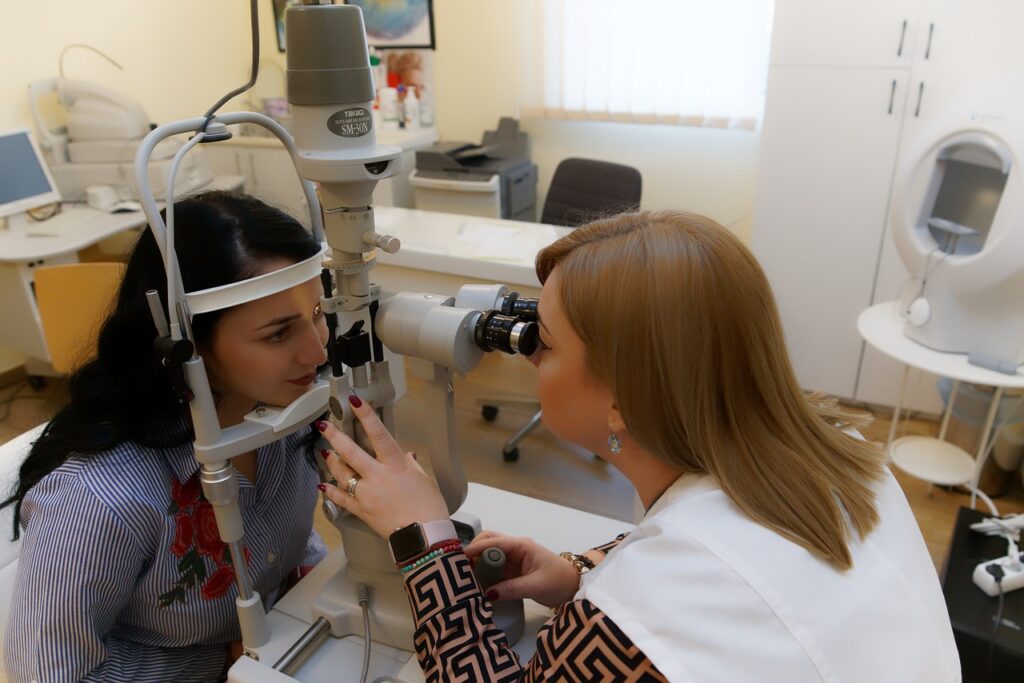Specs Removal Treatment Options You Should Know
Specs Removal Treatment Options You Should Know Are you ready to say goodbye to glasses or contact lenses? Specs removal surgery has revolutionized vision correction, offering a range of advanced treatments tailored to your unique needs. From cornea-based procedures like LASIK and PRK to lens-based solutions like ICL, there’s an option for everyone. In this blog, we’ll break down the most popular specs removal surgeries—how they work, their differences, and why they might be the perfect solution for you. Cornea-Based Procedures: Reshaping Your Vision Cornea-based procedures involve reshaping the cornea to correct refractive errors such as myopia (nearsightedness), hyperopia (farsightedness), and astigmatism. These procedures are minimally invasive, safe, and provide excellent outcomes. Let’s explore the different types: Surface Ablation Procedures These procedures remove the outer layer of the cornea (epithelium) to reshape the underlying tissue. They are ideal for patients with thin corneas or those who want a flapless option. PRK (Photorefractive Keratectomy): How It Works: The epithelium is removed, and the cornea is reshaped using an excimer laser. Recovery Time: Takes longer to heal compared to LASIK but offers excellent results. Best For: Patients with thin corneas or active lifestyles where flap complications need to be avoided. Trans PRK (Transepithelial PRK): How It Works: An advanced version of PRK where both the epithelium and corneal tissue are reshaped in a single step using a laser. Benefits: No blade or alcohol is used, reducing the risk of complications. Best For: Patients seeking a no-touch, all-laser procedure. Wavefront Optimized and Customized PRK: How It Works: Uses advanced mapping technology to create a personalized treatment plan based on the unique imperfections of your eye. Benefits: Provides sharper vision and reduces the risk of night glare or halos. Best For: Patients with higher-order aberrations or complex prescriptions. Flap-Based Procedures Flap-based procedures involve creating a thin flap on the cornea, which is lifted to allow the laser to reshape the underlying tissue. These procedures are known for their quick recovery and minimal discomfort. LASIK (Laser-Assisted In Situ Keratomileusis): How It Works: A microkeratome or femtosecond laser creates a corneal flap, and an excimer laser reshapes the underlying tissue. Recovery Time: Most patients experience improved vision within 24 hours. Best For: Patients seeking fast recovery and minimal downtime. Contura-LASIK: How It Works: Combines LASIK with wavefront technology for enhanced precision and customized outcomes. Benefits: Reduces the risk of glare, halos, and other visual disturbances. Best For: Patients with higher-order aberrations or specific visual needs. LASEK (Laser Epithelial Keratomileusis): How It Works: Similar to PRK, but the epithelium is loosened with alcohol and repositioned after the procedure. Benefits: Suitable for patients with thinner corneas who are not ideal candidates for LASIK. Best For: Patients looking for a middle ground between PRK and LASIK. Lenticule-Based Procedures Lenticule-based procedures are minimally invasive and do not require creating a corneal flap. These procedures involve reshaping the cornea by removing a small lenticule (disc-shaped tissue) through a tiny incision. Let’s explore how these procedures work: How Lenticule-Based Procedures Work A femtosecond laser is used to create a precise, disc-shaped piece of tissue (lenticule) within the cornea. This lenticule is then extracted through a small incision (usually 2-4 mm), reshaping the cornea and correcting refractive errors. Since no flap is created, these procedures are less invasive and reduce the risk of dry eyes and other flap-related complications. Key Benefits of Lenticule-Based Procedures Minimally Invasive: Small incisions mean faster healing and less trauma to the cornea. Reduced Dry Eye Risk: Unlike flap-based procedures, lenticule-based surgeries preserve more corneal nerves, minimizing dry eye symptoms. Ideal for Active Lifestyles: The absence of a corneal flap makes these procedures safer for individuals involved in high-impact activities. Types of Lenticule-Based Procedures SMILE (Small Incision Lenticule Extraction): Machine Used: Zeiss VisuMax laser. Best For: Patients with myopia and astigmatism who prefer a flapless, minimally invasive procedure. SILK (Smart Intracorneal Lenticule Keratoplasty): Machine Used: Johnson & Johnson laser system. Best For: Patients seeking advanced customization and precision in vision correction. CLEAR (Corneal Lenticule Extraction for Advanced Refractive Correction): Best For: Patients with extreme refractive errors requiring significant vision correction. While the basic principle of lenticule-based procedures remains the same, the choice of procedure depends on the technology used (Zeiss for SMILE and Johnson & Johnson for SILK) and the patient’s specific needs. Lens-Based Procedures: Implantable Solutions Lens-based procedures involve implanting an artificial lens into the eye to correct refractive errors. These are ideal for patients with thin corneas, high prescriptions, or early signs of cataracts. 1. ICL (Implantable Collamer Lens) How It Works: A biocompatible lens is implanted behind the iris and in front of the natural lens to correct vision. Benefits: Reversible, does not alter the cornea, and can correct very high prescriptions. Best For: Patients with thin corneas or high myopia/hyperopia. 2. IPCL (Implantable Phakic Contact Lens) How It Works: Similar to ICL, but designed for patients with specific anatomical requirements. Benefits: Customizable and reversible, making it a safe long-term solution. Best For: Patients with unique eye anatomy or extreme prescriptions. Choosing the Right Specs Removal Surgery for You The best specs removal surgery depends on several factors, including: Your Prescription: High prescriptions may require lens-based procedures like ICL or IPCL. Corneal Thickness: Thin corneas may make surface ablation or lenticule-based procedures a better choice. Lifestyle: Active individuals may prefer flapless options like SMILE or PRK. Budget: Some procedures, like LASIK, are more affordable, while others, like Contura-LASIK or SILK, offer advanced customization at a higher cost. Why Choose Shanthi Nethralaya for Specs Removal Surgery? At Shanthi Nethralaya, led by Dr. B. Shanthi Niketh, patients receive world-class care tailored to their unique vision needs. Here’s why we stand out: Advanced Technology: Equipped with state-of-the-art lasers, including Zeiss VisuMax and Johnson & Johnson systems, for precise outcomes. Expert Surgeons: Dr. B. Shanthi Niketh specializes in all types of specs removal surgeries, ensuring exceptional results. Personalized Care: Every patient receives a customized treatment plan based on their prescription, corneal thickness, and lifestyle. Affordable Excellence: Competitive pricing ensures that advanced treatments like SMILE, Contura-LASIK, and ICL are accessible to all. Comprehensive Follow-Up: Post-operative care ensures a smooth recovery and optimal results. Questions to Ask Before Undergoing Specs Removal Surgery Before committing to specs removal surgery, ask these questions to ensure




